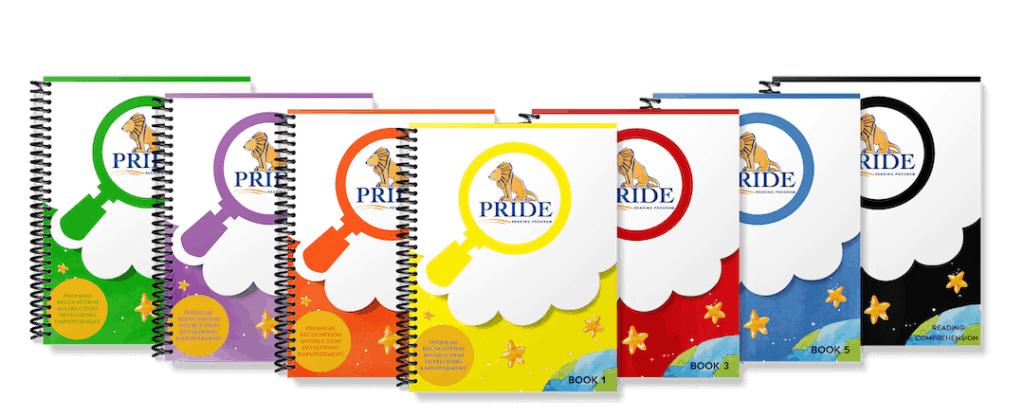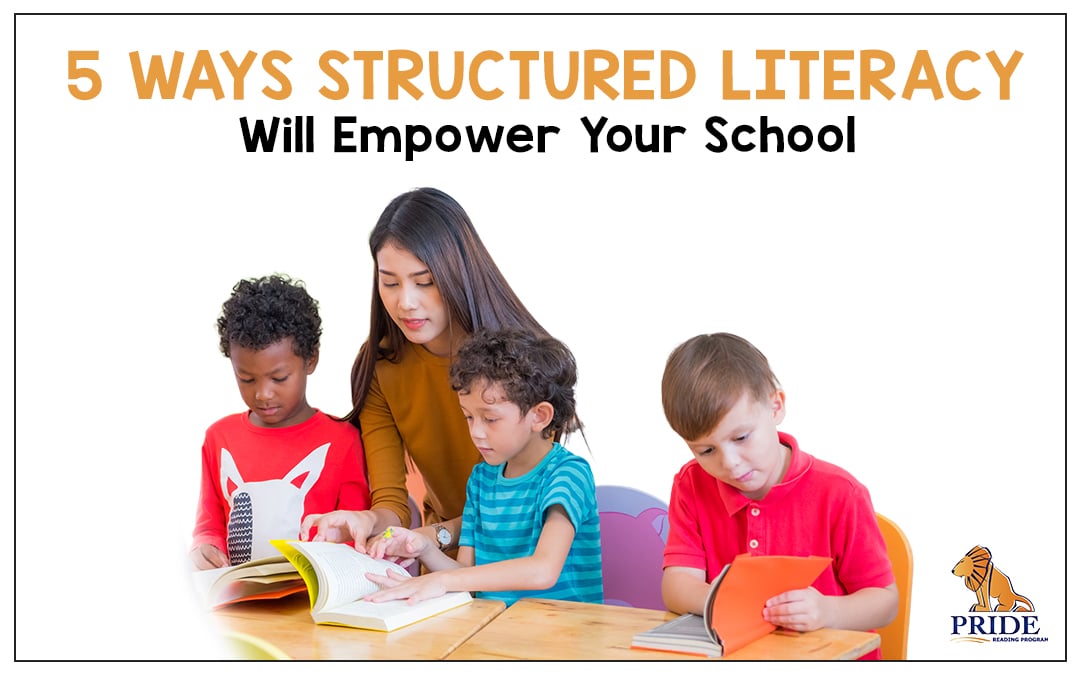How Structured Literacy Curriculum Will Help Your Teachers & Students–No Matter What Happens in the 2020-2021 School Year
The uncertainty about the safety of classroom instruction because of COVID-19 has been looming over educators’ heads since March. States, districts, schools, and teachers have worked nonstop to adapt and serve students. But the unpredictable nature of this pandemic has left just about everyone involved in education dissatisfied and anxious. No one can predict exactly how the pandemic will affect different schools across the country in the coming school year. What districts and administrators can do is look for ways to keep high-quality instruction consistent and continuous. Thankfully, when it comes to reading instruction, a research-driven, tried and true approach that fits this description already exists: Structured Literacy Curriculum.
A structured literacy curriculum focuses on systematic and sequential instruction of reading skills from simpler to more complex concepts. This type of curriculum explicitly teaches phonology, sound-symbol association, syllable instruction, morphology, syntax, and semantics. Structured literacy must also use cumulative and diagnostic instruction to assess students’ strengths, needs, and progress.
Structured Literacy is well-known for being an extremely effective way to teach reading to children with learning disabilities like dyslexia–and cutting-edge research shows that all children benefit from this type of reading instruction.
In the past 5 years, more and more schools have begun to adopt a Structured Literacy curriculum like PRIDE to support its students with dyslexia and other reading disabilities. And, in this challenging new educational climate, Structured Literacy is emerging as one of those rare curriculum programs that can adapt with ease to the challenges of teaching through a pandemic.
How exactly can structured literacy do all this? Keep reading for the top 5 ways programs like PRIDE empower teachers to give effective reading instruction in the classroom, online, or any combination of the two.
Quick-Change from In-Person to Online Instruction
PRIDE’s Orton Gillingham-based curriculum uses a system of adaptable instructor scripts and simple sets of student supplies including workbooks, whiteboards, letter tiles, games, and flashcards. PRIDE expanded its curriculum to include online instruction in 2018, and the online platform has served teachers and students extremely well during the pandemic.
Because Structured Literacy is so systematic and sequential, teachers and students can adapt to shifts between classroom learning and distance learning without missing a beat. PRIDE works in almost any hybrid scenario imaginable for the coming year.

Continuity and Consistency of a Structured Literacy Curriculum
One of the biggest concerns about education during the pandemic is that the quality of instruction–and student learning–cannot be as high as it would be during a normal school year. All children learn better when they feel they have safe, predictable learning spaces, and continuity of curriculum helps provide a sense of routine and normalcy.
Having a versatile structured literacy curriculum like PRIDE allows for continuity and consistency in instruction that would otherwise be extremely difficult in such a changeable learning environment. Because PRIDE’s online program is almost identical to its traditional program, this also means schools and teachers would need no time between a school closure and restarting reading lessons online.
[et_bloom_inline optin_id=”optin_4″]
Multisensory Learning–Even Through a Computer Screen
There’s no way to sugarcoat it: online/distance learning just isn’t the same as in-person learning, particularly for younger students. However, because PRIDE’s curriculum already incorporates multisensory learning, students can have a much more interactive learning experience online.
A few examples of the numerous multisensory aspects of PRIDE include: students writing sounds in the air with their fingers (we call it Sky Writing), practicing writing out a word on their palm with their fingers before putting pencil to paper, and using letter tiles to spell out words either physically on in an online game.
PRIDE Reading Program Digital Version gives the student the ability to access and save their progress. Interactive sound cards, letter tiles, and blending drills are integrated in the eBook. Teachers and students are able to write in the eBook and save their progress.
Multisensory learning improves student engagement, comprehension, and retention because shrinks the sense of distance in online learning. This is of the utmost importance for students with learning disabilities like dyslexia.
Works for all Learners
One of the biggest arguments in the case for a Structured Literacy curriculum is that the explicit nature of instruction makes it very difficult for a weak point in a student’s reading to go unnoticed by a teacher. Students–even those with learning differences–are less likely to have gaps in their reading knowledge or “fall through the cracks” using a curriculum like PRIDE.
Even from a distance, teachers can determine how well a student is progressing in mastering a given skill and integrating it into his/her existing knowledge. PRIDE’s curriculum enables formative assessment at every step, in every lesson.

Low Price Point, High Efficacy
Well before the term “COVID-19” existed, PRIDE Reading Program started a mission to reenvision how reading instruction and intervention looks in schools. PRIDE’s curriculum is cost-effective, doesn’t need hours upon hours of training, and–most importantly–it works.
Another huge benefit of PRIDE is that teachers aren’t burdened with the task of creating unique instructional styles depending on whether they are in the classroom or online, nor do they have to feel isolated from the resources they would usually have on campus for their students with reading difficulties. The stress of teaching during this pandemic is enough without having to individually adapt a curriculum that wasn’t designed for online or hybrid instruction, and PRIDE takes that weight off of teachers.
Coronavirus is forcing administrators to make choices between options that shouldn’t even be in competition with each other. No one should have to decide whether a child’s future or a community’s health is more important, but schools have to walk that line this year. With all the stressors and unpredictable variables in the coming school year, using PRIDE’s Orton-Gillingham method of Structured Literacy instruction is a worthwhile investment in student success and teacher support regardless of what unfolds in the 2019-2020 school year.
I Have a Resource For You!
Thank you for reading my post today! You might also enjoy reading my previous posts:
The Science of Reading: What All Teachers Should Know
My Favorite Multisyllabic Word Activities
Please don’t leave without checking out the PRIDE Reading Program. The PRIDE Reading Program is an Orton-Gillingham curriculum that is used by teachers, tutors, and homeschooling parents worldwide with great success.



